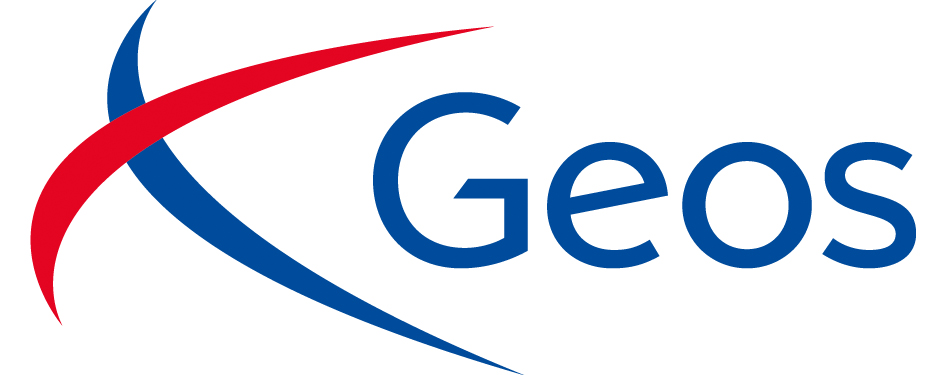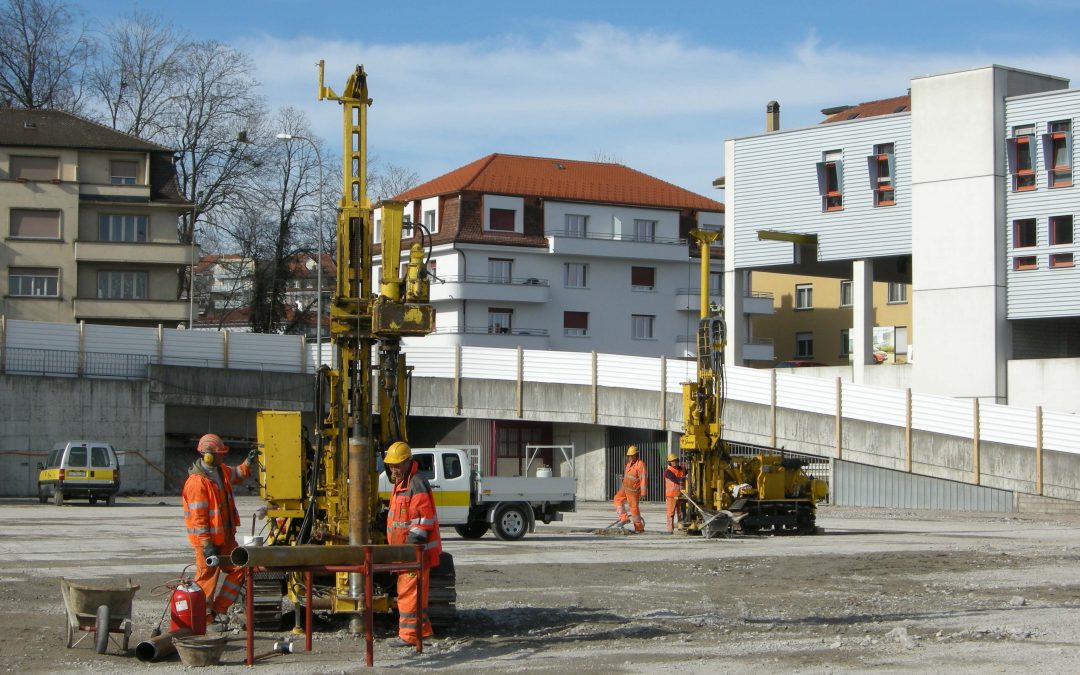
2016-09-29
Environmental Engineering (Polluted site management)
- Client: A multinational of the chemical industry
- Project manager: Ingerop consulting and engineering
- Completion date: 2011-2012
PROJECT DESCRIPTION AND CHARACTERISTICS
Project to rehabilitate a 4ha land, polluted to a large extent by chlorinated pesticides produced and buried on site between 1950 and 1970.
ASSIGNMENT
- Brief historical investigation and development of a technical investigation program to assess location and volumes of pollutants. Elaboration of tendering documents for investigation drillings.
- Monitoring and geological description of 74 drill holes (Depth of 6 to 12 meters) and 10 excavations trenches. Instructions for soil sampling (280 samples). Coordination of companies, compliance assessment for Health and Safety requirements.
- results interpretation, estimation of polluted material volumes. Drafting of a synthesis report and a remediation project. Evaluation of the proposals of services for the remediation works.
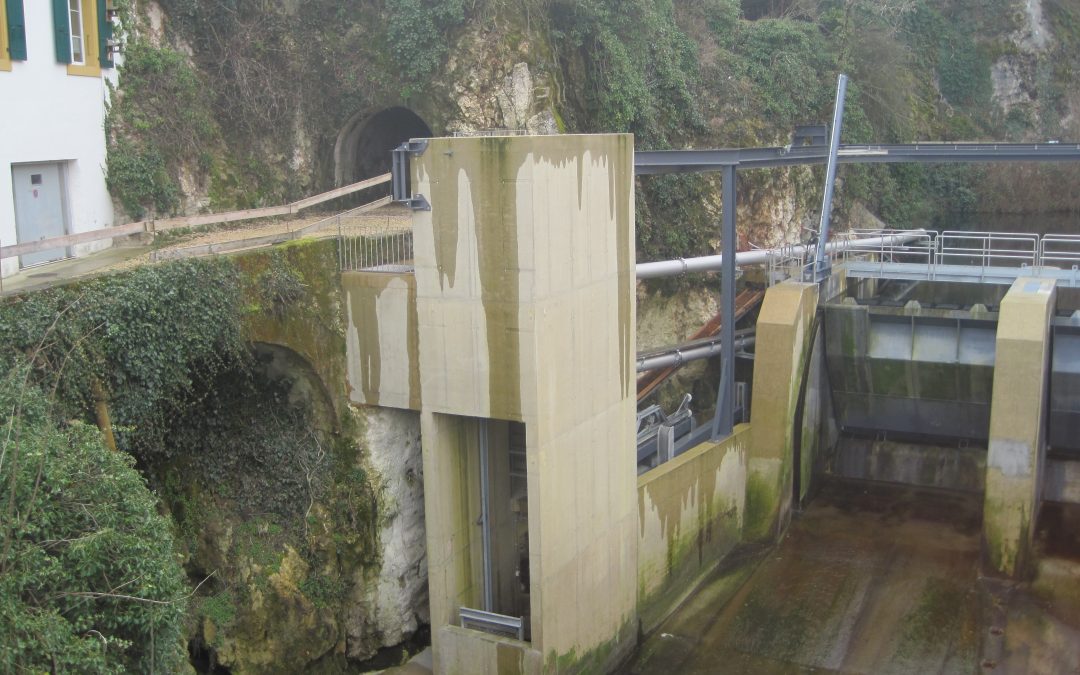
2016-08-04
Environnemental Engineering (Fish pass structures)
- Client: VOEnergies Production SA
- Assignment: Complete Project Management
- Total cost of work: 400 kCHF
- Total cost of the assignment: 48 kCHF
- Completion date: 2009-2013
PROJECT DESCRIPTION AND CHARACTERISTICS
As part of the construction of the Moulinets dam, GEOS studied a concept of crossing the fall of nearly 7m to ensure the free migration of fish.
Given the difficulties encountered in installing a conventional poolway, the installation of a fish lift has proved to be a proven solution in narrow situations where there is a clear lack of space.
The principle of such a structure is relatively simple: by placing the lift in the same place where the fish accumulate at the foot of the dam, the fish are attracted by an attraction flow of 350 l / s, supplied by a DN350 stainless steel pipe from the reservoir to the lift. For the attracting current produced to be sufficient (with a speed of 1.5 m / s), an opening of reduced size is placed at the lift entrance.
The fish are therefore attracted to a net that carries them about 7m higher. From there, they are brought to harbor with the aid of water pumped in a pipe over the crest of the dam.
The climbing and descent movements are automated and according to a periodicity depending on the time of year and the species to be transported.
With regard to downstream migration, a system of removable flaps has been implemented in the control grid of the plant. When the grid flaps are raised, fish can pass through the grid. They are then recovered in a chute, followed by a trapping tank and a downstream discharge pipe.
ASSIGNMENT
These studies consist in particular of performing the following services (according to SIA 103 (Swiss Standard)):
- Phase 31: Pre- Project;
- Phase 32: Design of works;
- Phase 33: Application Procedure;
- Phase 41: Invitations to tender, comparisons of bids, proposals for tenders;
- Phase 51: Implementation Project;
- Phase 52: Execution of works;
- Phase 53: Commissioning, completion
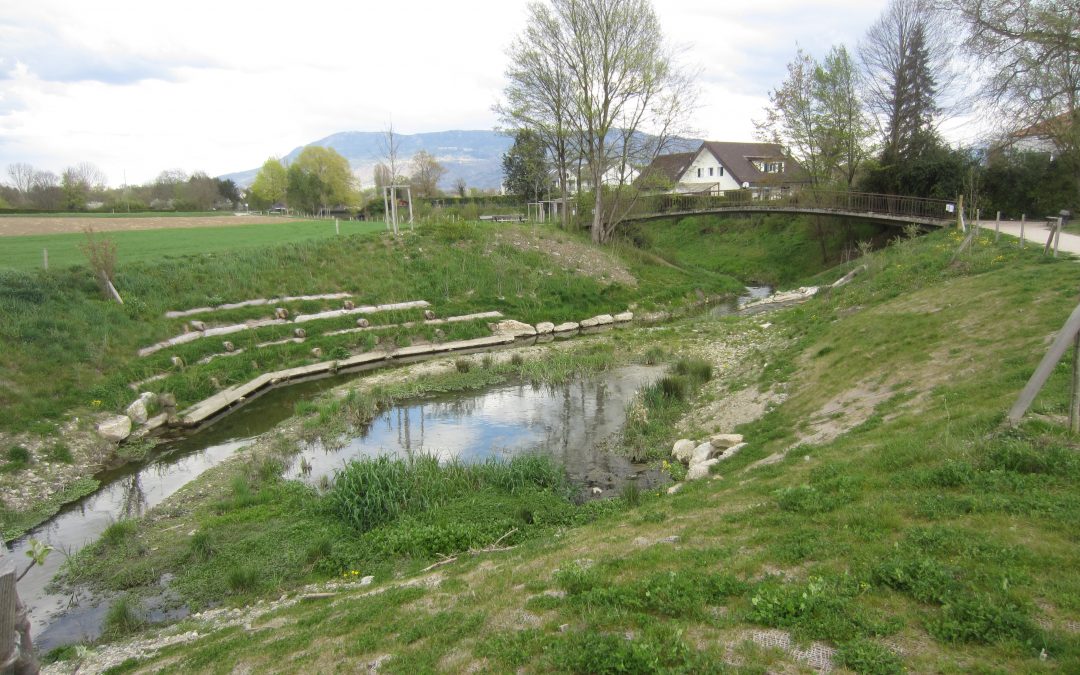
2016-08-04
Environmental Engineering (Renaturation of water courses)
- Client: State of Geneva – Service of Renaturation of Water Courses
- Assignment: Project Management and design
- Total cost of work: 800k CHF
- Total cost of the assignment: 110k CHF
- Completion date: 2012-2014
PROJECT DESCRIPTION AND CHARACTERISTICS
The project consists of restoring the river to a morphology close to its natural state, completely redesigning the banks and the low-flow channel of the watercourse that appeared before as a channel, while making sure to maintain the hydraulic conditions during floods.
The works include:
- Demolition of concrete culvert, creation of meanders to get flow diversity, creation of new wetlands to increase biodiversity and develop biotopes;
- Revegetation of the banks on biodegradable geotextile (coconut mat) – Planting of species corresponding to the plants that are normally encountered in this type of environment in order to accelerate re-greening, to limit risks associated with neophytes and to improve stability of banks and slopes;
- Realization of vegetated wooden caissons with fish shelters;
- Moving the walking path out of the space close to the watercourse in order to respect the function of biological corridor as much as possible;
- Renovation of relaxation and walking areas.
For a 430m renatured reach, about 1,800 m³ of concrete and blocks were removed from the watercourse, for a volume of earthwork of 10,000 m³.
ASSIGNMENT
GEOS has carried out complete management and design of the project, in association with an aquatic environment specialist, including:
- Preliminary study;
- Conceptual design;
- Advanced hydraulic analysis;
- Design of works;
- Procedure for requesting authorization;
- Preparation of the tender documents, bid analysis;
- Detailed design;
- Site supervision.
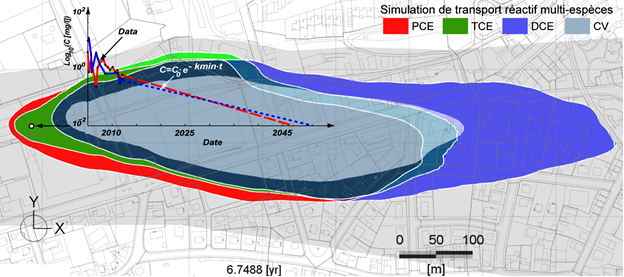
2016-08-04
Environmental Engineering
- Client: DuPont Polymers Powder Switzerland
- Completion date: 2010
PROJECT DESCRIPTION AND CHARACTERISTICS
A multi-species reactive transport model was developed to estimate the time required for attenuation of chlorinated solvents that pollute an industrial site.
Two main variants were modeled:
(1) natural attenuation of pollution by biodegradation and
(2) active treatment of the sources of pollution by injection of a stimulating solution
ASSIGNMENT
GEOS was in charge of:
- statistical processing of concentration data,
- validation of a permanent flow pattern in free groundwater,
- calibration of reactive multi-species transport parameters,
- sensitivity analysis on PCE degradation constants, TCE, TCE and CV,
- predictive simulations of evolution of the pollution for various scenarios including active treatment of all pollution source zones by injection of a substrate stimulating bacterial activity, responsible for the degradation of the chlorinated solvents.
- the feasibility study of active treatment.
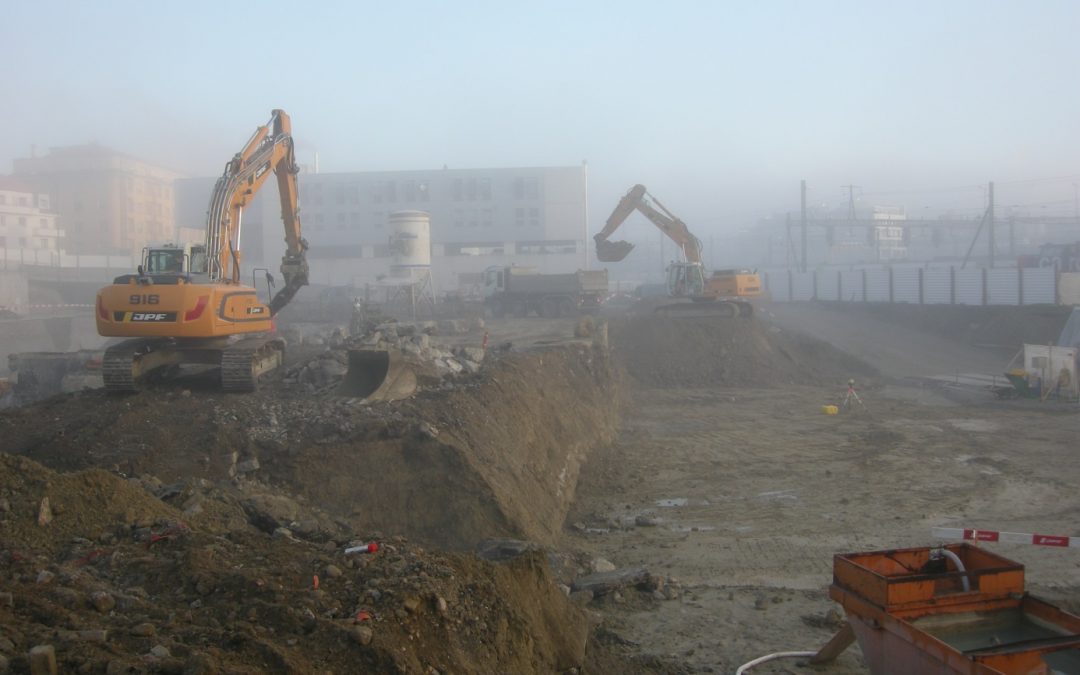
2016-08-04
Environmental Engineering (Excavation material management)
- Client: Metallwerke refonda AG
- Project manager: Geos Consulting engineers
- Completion date: 2012-2013
- Cost of depollution: 6,800 kCHF
PROJECT DESCRIPTION AND CHARACTERISTICS
Over a century, this former urban industrial site housed various industrial activities including workshops for maintenance of railway equipment, foundry, aluminum can manufacturing plant and tertiary sector. Its redevelopment in progress in Fribourg hyper-center presented constraints related to the urban and railway traffic as well as the residential environment. In addition, the legacy of pollution in land, including the presence of significant concentration of perchlorethylene (PER), must be managed.
ASSIGNMENT
Development and implementation of an environmental quality control plan including the following aspects:
1) Real time sorting of excavated material according to their degree of contamination;
2) Orientation of excavated material by daily sampling and in-situ controls;
3) Selection of the treatement circuit according to the applying regulation, ie treatment by thermal desorption or evacuation in adapted landfill;
4) Quality control of air emissions, quality control of the underground water.

